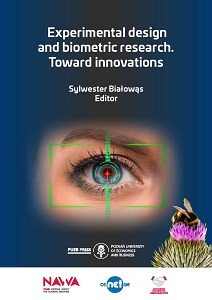Eye-tracking research
Eye-tracking research
Author(s): Sylwester Białowąs, Adrianna Szyszka
Subject(s): Economy, Methodology and research technology
Published by: Wydawnictwo Uniwersytetu Ekonomicznego w Poznaniu
Keywords: scientific methods;eye-tracking method;research;
Summary/Abstract: Eye movements provide information on subconscious reactions in response to stimuli and are a reflection of attention and focus. With regard to visual activity, four types of eye movements—fixations, saccades, smooth pursuits and blinks—can be distinguished. Fixations—the number and distribution, total fixation time or average fixation duration are among the most common measures. The capabilities of this research method also allow the determination of scanpaths that track gaze on the image as well as heat- and focus maps, which visually represent points of gaze focus. A key concept in eye-tracking that allows for more in-depth analysis is areas of interest (AOI)—measures can then be taken for selected parts of the visual stimulus. On the other hand, the area of gaze outside the scope of analysis is called white space. The software allows for comparisons of static and non-static stimuli and provides a choice of template, dataset, metrics or data format. In conducting eye-tracking research, proper calibration is crucial, which means that the participant’s gaze should be adjusted to the internal model of the eye-tracking software. In addition, attention should be paid to such aspects as time and spatial control. The exposure time for each participants hould be identical. The testing space should be well-lit and at a comfortable temperature.
Book: Experimental design and biometric research. Toward innovations
- Page Range: 39-60
- Page Count: 22
- Publication Year: 2021
- Language: English
- Content File-PDF

